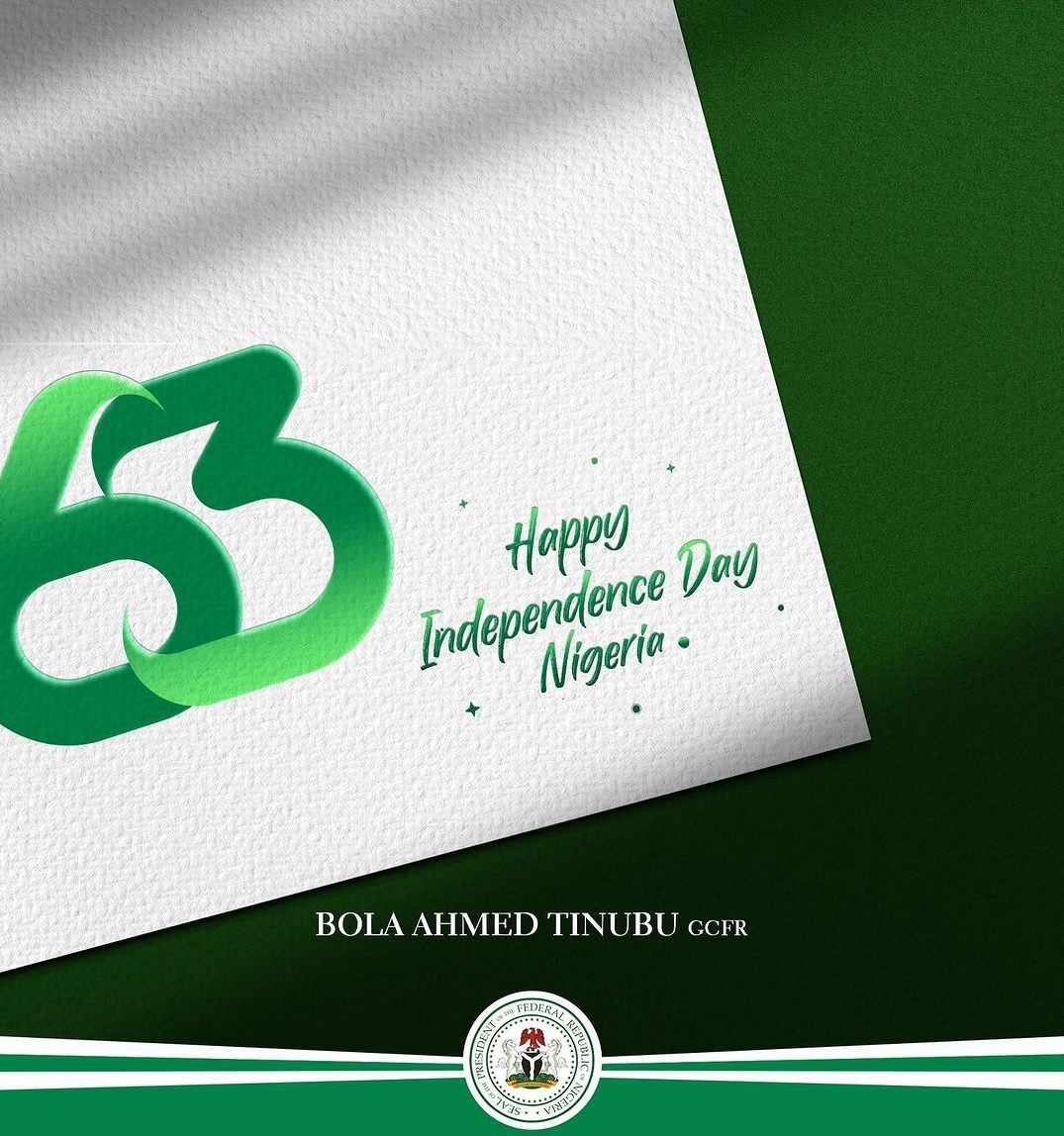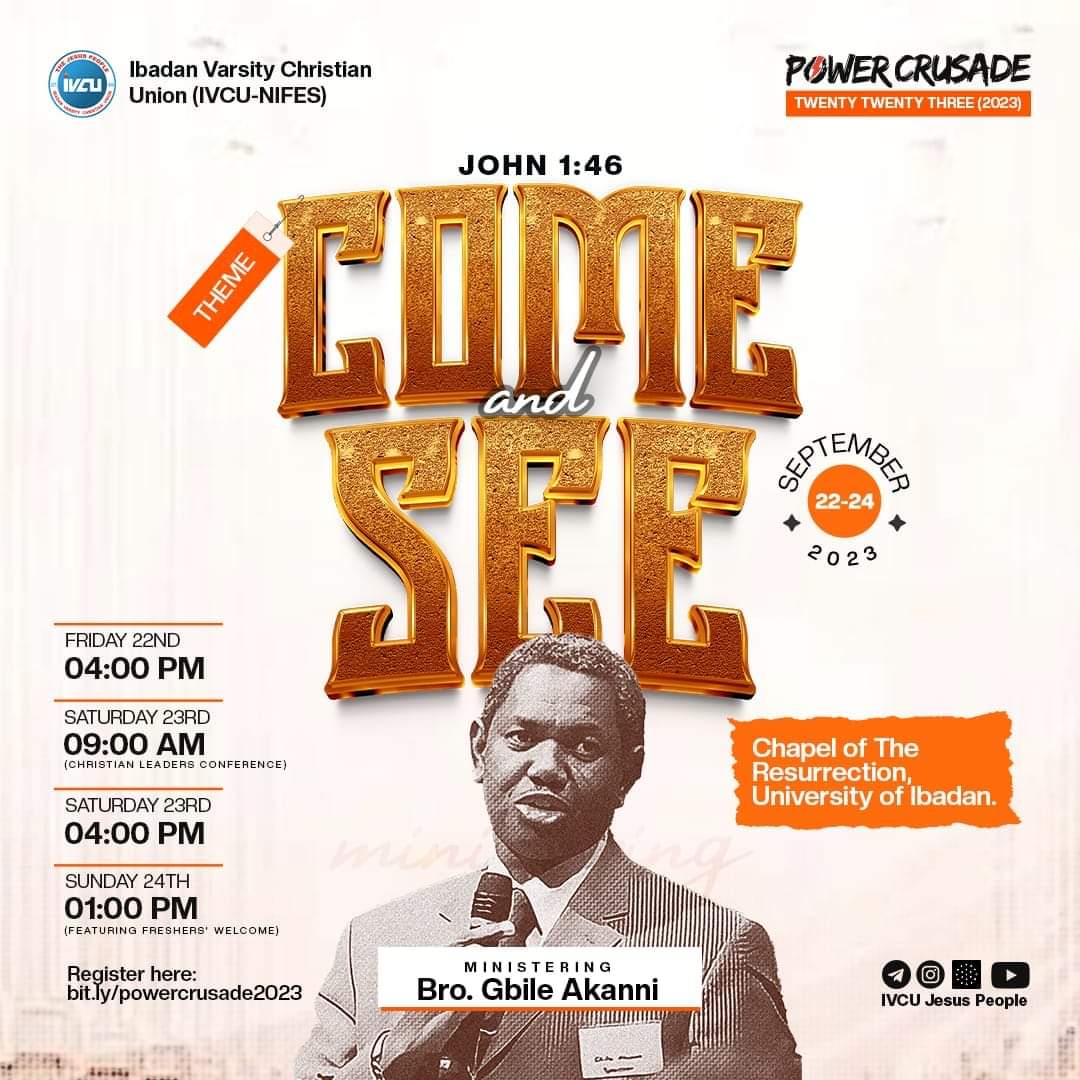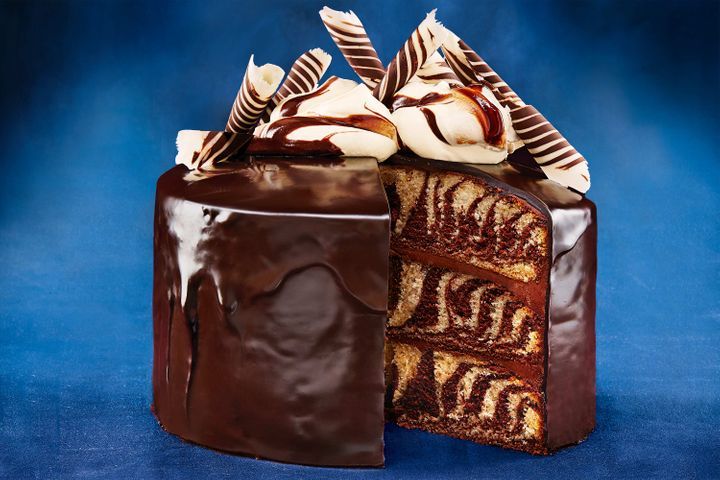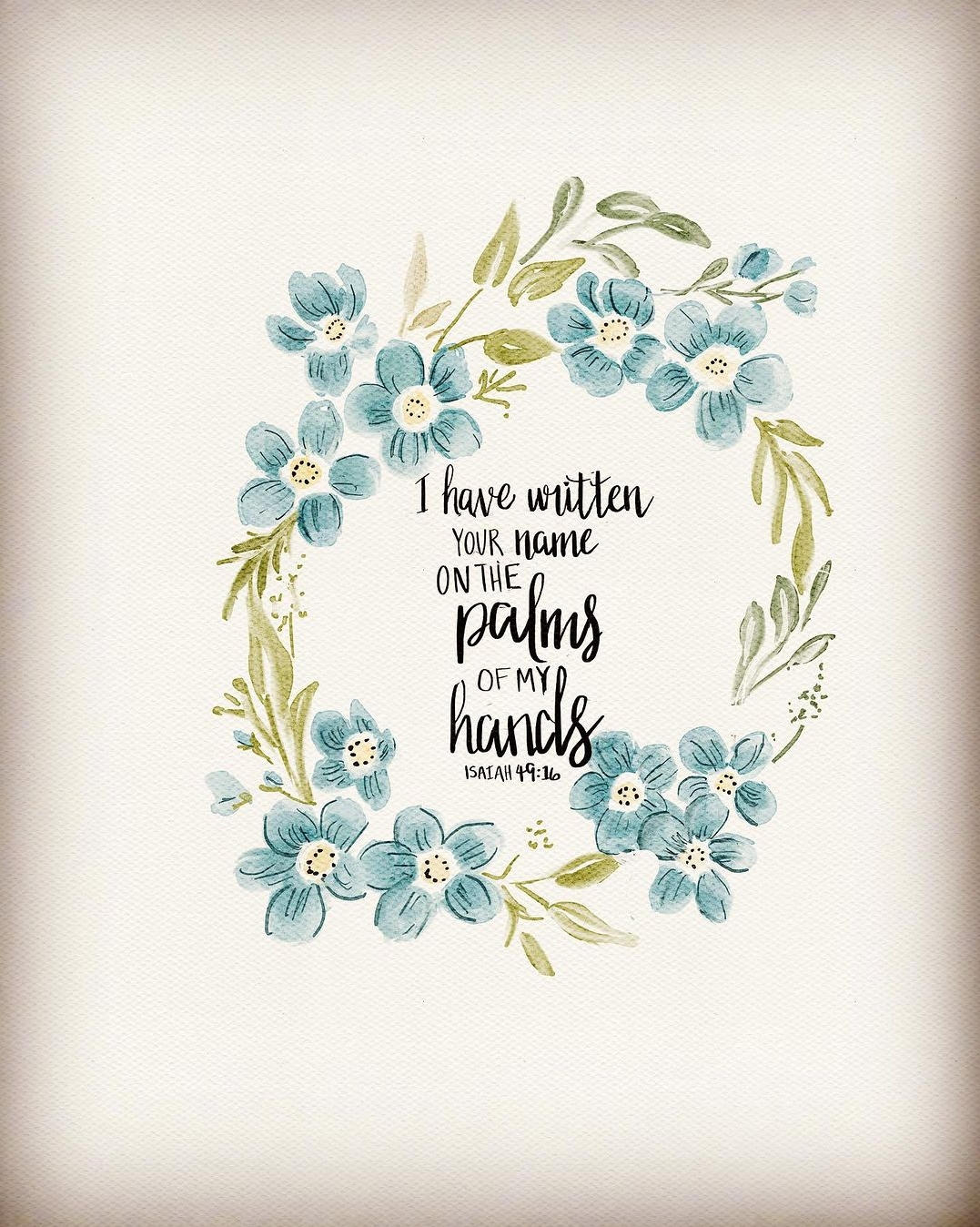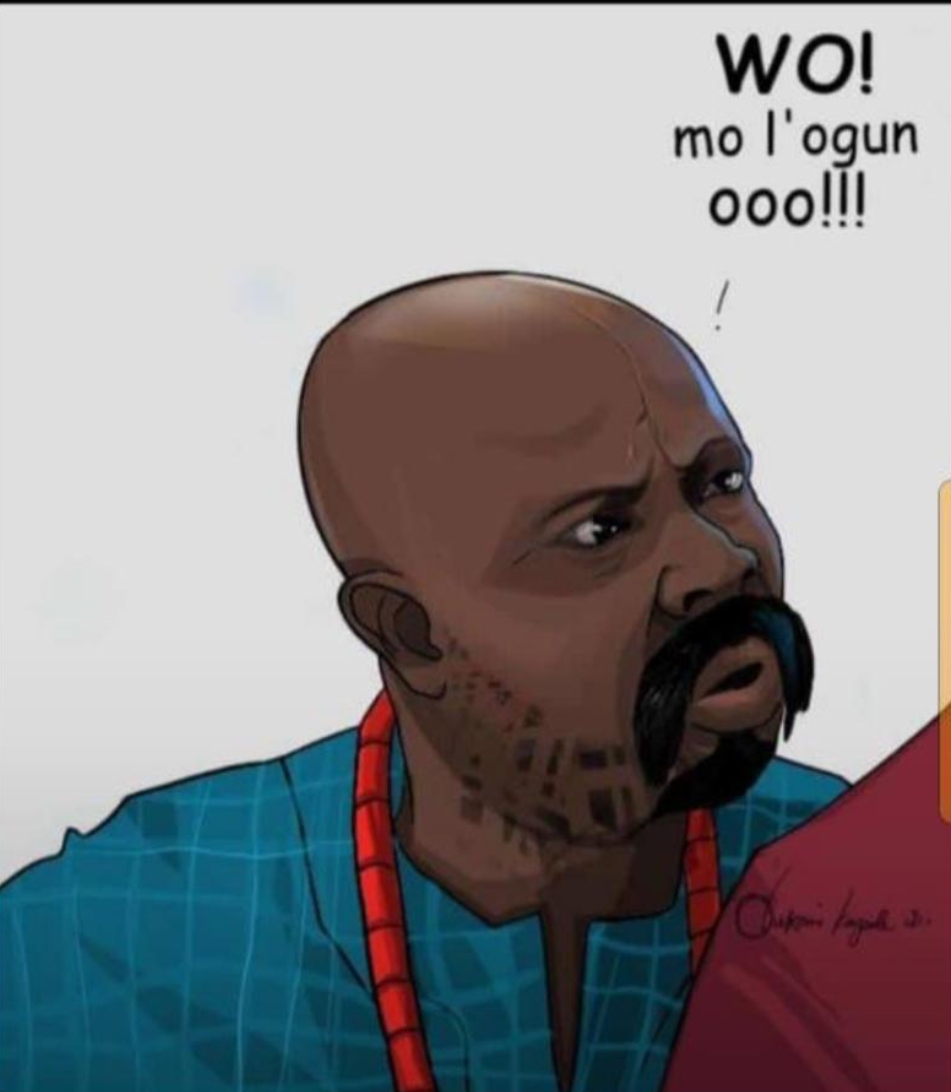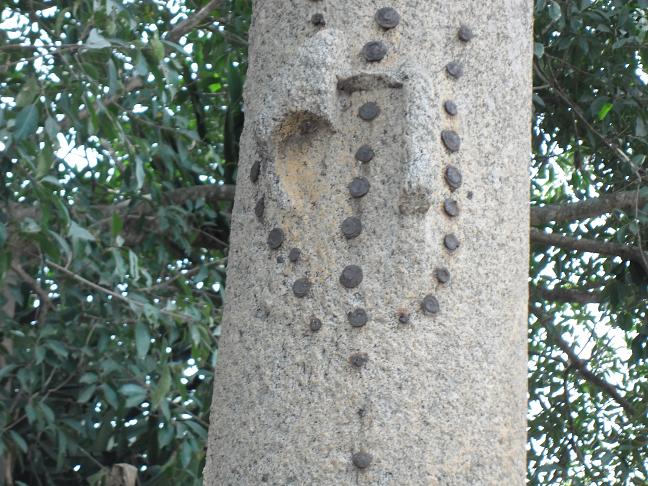
Oranmiyan obelisk‘s creation was influenced by some artistic principles of the ancient Yoruba. These principles serve as pointers to the importance of the obelisk in the royal burial rites of the Yoruba. Scribner’s Sons in 2002 observes “In one type of African art, forms that have known meanings are used in creating images of figures and ideas. The purpose is to portray rulers or ancestors as superhuman and, at the same time, to communicate a sense of permanence.” (The Oranmiyan obelisk was used to portray him as a superhuman because Opa Oranyan (the staff of Oranyan) was regarded as his walking stick while alive. An ordinary human being could not have made use of it as a walking stick because of its height. Captain Elgee records it to be 12 feet ; Dennett in 1910 records it to be 11 feet; but Johnson in 1956 writes that it “… is about 10 or 12 feet in height …” because it can be measured from more than one side.
Another artistic principle of the ancient Yoruba that influenced the making of the obelisk of Oranmiyan is found in the Yoruba principle of embellishment, “Design and decoration play a major role in the meaning of an object. An artist may make a mask large to indicate that it is important and add a prominent forehead to suggest that the mask is swollen with spiritual power”
Unlike Egyptian obelisk, the Yoruba obelisk of Oranmiyan lacks a pyramidion – the gold or electrum at the top of an Egyptian pyramid – but it has a unique design. Dennett in 1910 writes: “Near the centre of the pillar a horn and an axe are carved. Above these figures forty-five copper headed nails in three rows had been driven into the stone, on one side of it ten, and on the other eight, while below twenty of these curious nails still remain.”
Johnson however writes:
… it tapers to a point, and has upon one face of it, several spike nails driven into it, and some carvings as of ancient characters. The nails are arranged in such an ordered manner as to render them significant. First, there are 61 in a straight line from the bottom upwards at intervals of about 2 inches in midline; and next, at about a distance of 4 inches on either side of this, and from the same level on top, two parallel lines of 31 nails each running downwards and curving below to meet those of the midline. Then in the space between these three rows of parallel lines, and about the level where they converge, is found the most conspicuous of the carvings.
Fatunbi on the Oranyan Obelisk
Fatunbi, commenting on the Oranmiyan obelisk writes, “There is the image of a trident made from iron spikes on the obelisk,” but Williams and co in their 1998 article do not pay much attention on the nail design on the obelisk, they just write “On one side of the staff are some faded carvings, and in explicably there are some nails driven into it.” It is glaring that there are discrepancies in the observations of Dennett and Johnson on the obelisk. The total numbers of nails seen on the obelisk by both of them do not tally apart from the fact that where Dennett sees “horn and axe”, Johnson sees “ancient characters”- Resh and Yod. The fact that one sees horn and axe” and the other sees “ancient characters” does not mean that the characters engraved on the obelisk are not hieroglyphs – Resh and Yod. Commenting on one of the characteristics of hieroglyphic writings Siculus writes:
“Now it is found that the forms of their letters take the shape of animals of every kind, and of the members of the human body, and of implements and especially carpenters’ tools; for their writing does not express the intended concept by means of syllables joined one to another, but by means of the significance of the objects which have been copied and by its figurative meaning which has been impressed upon the memory by practice. “
From this explanation, it is clear that Dennett sees the shape of the letters in animal and implement forms while Johnson sees the letter per se. This does in any way justify the differences they have in the area of the number of nails on the obelisk. The discrepancies in their observations notwithstanding, the two of them still present the design of the nails on the obelisk to be of trident formation. This unique design -the trident arrangement of the nails – is more than an embellishment; it has symbolic meanings.
Johnson’s interpretation of the design
Commenting on the nails on the obelisk, Williams Lizzie and othrs, in a 2008 article expressed the view that “The meaning of these is unknown.” But the interpretation of Johnson in connection with the design is that:
“… the 61 nails in midline represent the number of years Oranyan lived, and that the 31 each on either side indicates that he was 31 when he began to reign, and he reigned 31 years, the year he began to reign being counted twice as is the manner of the Yorubas;”
It is not appropriate to interpret the arrangement of the nails as the numbers of years Oranmiyan lived and reigned. In the first place, if the carvings on the obelisk are not regarded as “horn and axe” but ancient characters – hieroglyphics – it definitely means the artists that designed the obelisk was not a stranger to the writing culture of Egypt. The Egyptians did not just write words alone, they also wrote numbers because the hieroglyphs accommodated both the writing down of words and large numbers.
In this connection, if they could have written “Resh and Yod which stand for Oranyan”, they should also have been able to write the number of years Oranmiyan lived and reigned. The Ife artistes who were able to write hieroglyphics characters would not have forgotten how they used to write numbers while they were in Egypt.
Slideboom in 2011 notes that around 3000 BC, the ancient Egyptians had ways to write down numbers. They made one vertical line for one, two vertical lines for two, and so on up to nine. For ten, the Egyptians made a U-shaped mark. For 100, the Egyptians drew a coil of rope, and for 1000 they drew a lotus flower. They used a finger to show 10,000. In the Oranyan obelisk, the U-shaped for ten and the double U-shaped marks for twenty are not shown while Resh and Yod are shown on the obelisk. In view of this, the arrangement of the nails is definitely not representing any number of years. The nails are not supposed to be counted to determine any fact in connection with Oranmiyan. The significance of the arrangement of the nails can only be comprehended if it is viewed from a holistic perspective as a trident.
Generally, in this modern era, a trident is an occult or evil symbol. In some Christian mythology it is an instrument of the Devil. According to Symbols (nd), it is “Called the devils pitchfork,” it has symbolized major gods in various pagan cultures. In India, it is linked to the Hindu “trident-bearer” Shiva, spouse of the skull-bearing goddess Kali.”
Previously the trident was not at all connected to the Devil. The truth is that, “In many languages of the ancients, the sign of trident designates the mountains (at the half way from the Gibraltar to the Atlantis City K.M.) tops towering above the sea (means an ocean sometimes K.M.).”
The fact that the trident means an ocean also links it to an ancient god called Poseidia. This was the “… potentate of the seas and oceans as well as Atlantis. It became Poseidon in the Greece, Neptune for the Romans, trishula in Hindi, etc.” (Atlantis, nd, p1) Among the Yoruba, Olokun was connected with Poseidon of the Greek by Professor Leo Frobenious, a German Scholar but Newafrican (2010) writes “This was definitely a mistake, but the artwork in the city Ile-Ife was so sophisticated that it was easy to mistake it with that of Greek culture.”
The presence of this ancient symbol of trident on the Oranmiyan obelisk definitely has no connection with all these ancient gods because in Egypt where Oduduwa and his group came from, the trident was not a symbol of any of their gods, and none of these gods which tridents were identified with was worshiped in Egypt. Although in some ancient cultures, the trident which was called gig was also used for fishing and for fighting, this was not the case with Egypt. This is why Ancient Wells (nd) comments that “There is also no archaeological example of a three pointed truncheon, or a trident weapon, yet discovered in Ancient Egypt” (p1). In view of the fact that the trident was clearly not part of the culture of Oduduwa’s homestead, the trident design on the Oranmiyan obelisk has nothing to do with any of the ancient meanings associated with the trident.
The trident design does not even have any spiritual or religious significance among the Yoruba. The identification of the trident with Esu among the Yoruba in Diaspora is due to religious syncretism. This can be deduced from the following: “In Louisiana, [Esu is known] as “Papa Legba” he is a wise old black man with a staff (who loves toys). In Haiti; as Kalfu, he frequently takes the form of red demon. He is imagined as a red youth with a trident by Umbanda practitioners in Brazil.”
A valid interpretation of the design
The meaning of the trident design on the Oranmiyan obelisk would now be deciphered from an historical perspective – the history of Oranmiyan, since it is quite clear that the trident design can not be interpreted based on any of the classical interpretations of the trident. Historically, Oranmiyan reigned as a Yoruba king at Benin Kingdom; Oyo Kingdom; and Ile-Ife, the cradle of the Yoruba. Thus, the trident design is symbolically telling the history of Oranmiyan as a Yoruba oba that ruled on three different occasions in three different kingdoms.
This historical fact is artistically reflected on the obelisk at Ile-Ife like this: the longest lines in the design (whether 20 or 61 nails) represents Ile-Ife where Oranmiyan reigned as an oba; the other two lines of (10/8 or 31/31 nails) symbolises Oyo and Benin kingdoms where Oba Oranmiyan also reigned on different occasions. The line of nails used to represent Ile-Ife is the longest of the lines when compared to the other two lines; this reflects Ile-Ife as the foundation, the pillar, the root and the most important of these three kingdoms to the ancient Yoruba. Going by Johnson’s description that “31 nails each running downwards and curving below to meet those of the midline”, one can say this design shows the kingdoms of Oyo and Benin as kingdoms which have the sources of their crowns linked to Oduduwa in Ile-Ife.
The design on the obelisk of Oranmiyan; the trident pattern of the nails and “… the ancient characters Resh and Yod which stand for Oranyan” show that the Oranyan’s staff is a memorial obelisk of Oba Oranmiyan, the only Yoruba oba that reigned in three kingdoms: Ile-Ife; Oyo and Benin kingdoms. Oba Oranmiyan can be rightly called the only “Trident King” among the Yoruba; before him no other Yoruba king could be regarded as a king who reigned in all these three kingdoms; and after him no other Yoruba king has reigned or would ever reigned in all these three kingdoms after the order of Oranmiyan.
With the information on the obelisk concerning Oranmiyan, it is clear that the Oranmiyan obelisk serves the purpose of a tomb stone similar to the purpose which modern gravestones serve. Information about the deceased, like the name, status and the date of burial are placed on grave stones.








